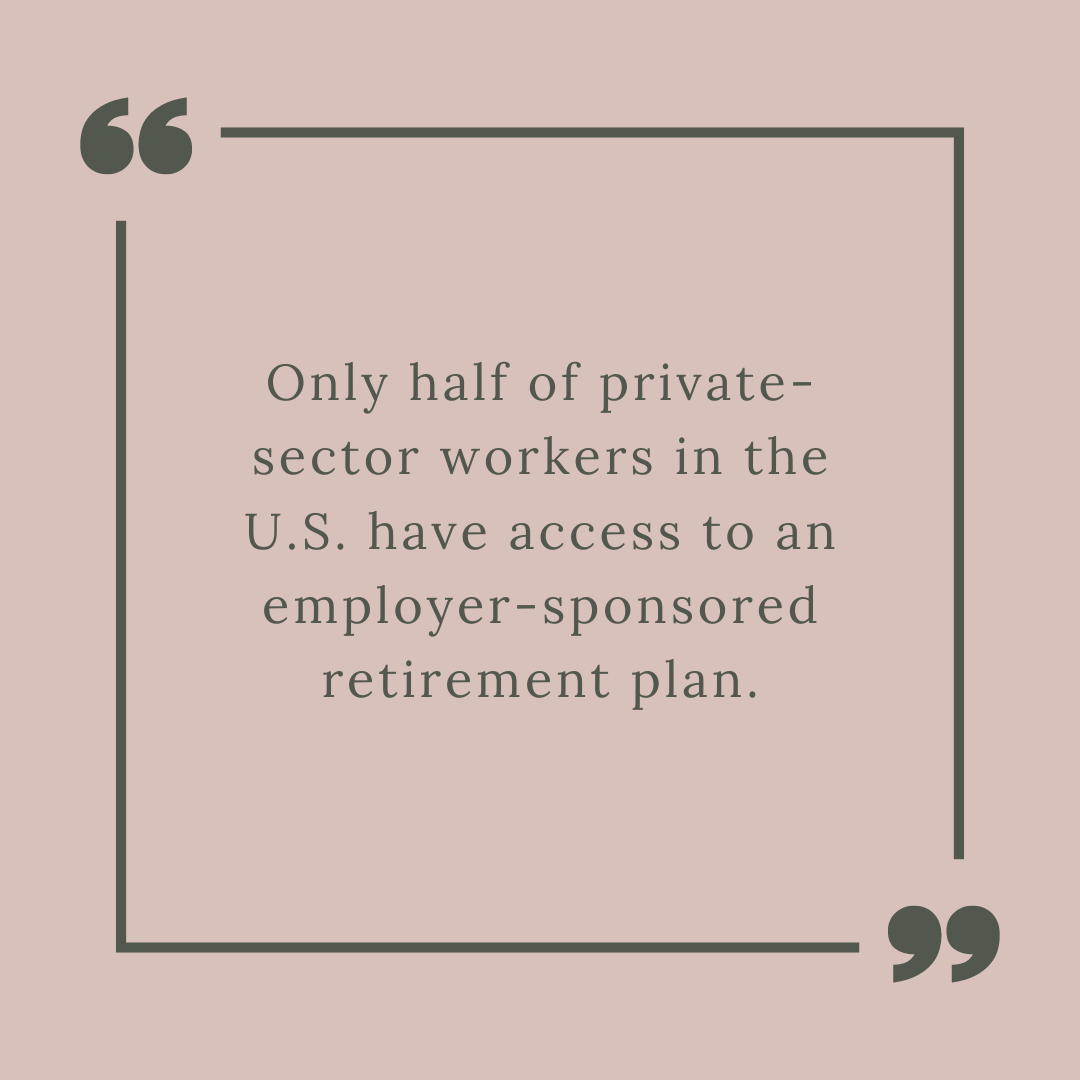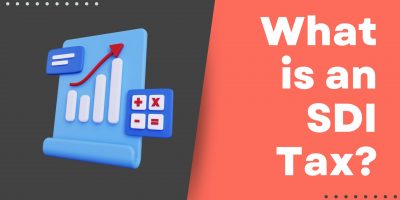
Can You Use Your 401(k) as a First Time Home Buyer?
Understanding the pros and cons of using 401(k) as a first-time home buyer is crucial. Should using the 401(k) as a first-time home
buyer be considered as a last resort?

Over the years, retirement planning has remained a benefit favored by all generations of workers.
SHRM’s 2024 Employee Benefits Survey shows that 81% of companies rate it as “very or extremely important,” putting retirement plans in second place, right behind health-related benefits.
Yet, according to the Center for Retirement Research, only about half of private-sector workers in the U.S. have access to an employer-sponsored retirement plan. Their publication on small businesses and retirement highlights that the coverage gap is more prominent here since small employers often struggle with the high costs of this benefit.
Multiple employer plans (MEPs) emerge as a potential lifeline for small businesses looking to enhance their employees’ retirement security. By pooling resources with other companies, MEPs can simplify plan management and reduce costs.
Despite these advantages, many employers remain unaware of MEPs or are cautious due to complexities and potential challenges.
To bridge the gap effectively, this Shortlister article delves into how MEPs work, weighing their potential benefits against challenges and exploring the steps to implement a multiple employer plan.

The IRS defines an MEP as a retirement savings plan “maintained by two or more employers who are not related.”
In other words, different companies participate in a single plan to reduce the administrative burden of managing these plans. Unlike a single-employer retirement plan, where the employer acts as the plan sponsor, MEPs are typically sponsored by an industry association or a Professional Employer Organization (PEO).
As such, they become a practical solution for small businesses because of their cost-sharing capabilities, making them more affordable.
At the same time, they lower company liability thanks to the plan sponsor (or “named fiduciary”), who is responsible for ensuring the plan complies with regulations and is appropriately managed.
While traditional solutions like 401(k) providers remain the most common approach to retirement, alternatives ranging from employee stock purchase plans (ESSPs) or profit-sharing plans administrators to multiple employer plans emerge as solutions for broader adoption, highlighting their increasing relevance in retirement savings and planning.
PeopleKeep’s 2024 Employee Benefits Survey reaffirms the importance of retirement benefits, as it shows they share the spotlight with health benefits for “the most employee participation.” Also, they were among the most important benefits for both employees (89%) and employers (87%).
However, just under 62% of companies offer coverage.
Another 30% of Americans show low retirement confidence and believe they won’t have enough money to live comfortably through this period of their lives.
Between this high demand, limited availability, and uncertainty for the future, how can MEPs help?
The importance of multiple employer plans lies in their ability to help businesses that may otherwise struggle to offer standalone retirement plans.
Many small and, on occasion, mid-sized companies face high costs and complex administrative tasks when setting up their plans.
MEPs allow employers to band together to address this, sharing resources and expenses. This alternative makes it easier and more affordable for them to provide retirement benefits to their employees, ensuring their financial security and satisfaction.
Below, we review the features, types, and framework of MEPs to understand better their role in retirement benefits and how to use them.

Understanding a multiple employer plan requires an in-depth look into its features.
In other words, behind the definition of a “retirement plan maintained by two or more employers who are not related,” the following key features emerge:
MEPs take on a large portion of the administrative burden for employers while handling compliance and reporting.
By combining assets and administrative functions, MEPs could lower costs compared to standalone retirement plans, making them more affordable for small businesses.
Usually, the plan has a designated sponsor (fiduciary) responsible for ensuring compliance with regulations and adequate management, reducing some liability for participating employers.
MEPs can be sponsored by one or several entities, including a board of directors (appointed by the adopting employers), co-sponsorships (adopting employers), trade associations, PEOs, etc.
MEPs accommodate employers from diverse industries and sizes, providing flexibility and inclusivity. However, some restrictions to their eligibility lead to different types of multiple employer plans.
Below, we observe two different categorizations.
The first one classifies MEPs based on who is eligible to participate. In this case, they can be open, closed, or a combination.
A recent development has introduced a new classification system highlighting two specific types.
The first type is the traditional MEP. Here, participating employers must share a common business interest or connection, such as in the same industry or trade association (like closed MEPs and ARPs).
The second type is the Pooled Employer Plan (PEP). In 2019, the SECURE Act created a new subclass of MEPs that does not require employers to have a specific connection. Instead, it allows unrelated employers to pool resources under a single plan.
The Act initially introduced PEPs for 401(k) plans, while the SECURE 2.0 Act of 2022 expanded this to include 403(b) plans for nonprofits and educational institutions.
Several provisions and regulations of the Internal Revenue Code (IRC) and associated IRS guidelines define MEP’s legal and regulatory requirements.
For example, the legal framework covers the following:
Historically complex, these plans saw significant changes with new Department of Labor (DOL) regulations effective September 30, 2019.
The new regulations expanded MEP availability to include more types of organizations, such as associations, PEOs, and even self-employed individuals.
MEPs’ main advantage is that they help small businesses deliver retirement benefits on par with larger organizations while offering cost efficiency, easier administration, and tax benefits.
For one, MEPs are a more affordable alternative to large-scale plans.
They allow small businesses to benefit from the collective resources of multiple employers while lowering administrative costs by sharing them among all participants.
Joining an MEP also provides the same tax benefits as initiating a new plan independently.
At the same time, MEPs offer a comprehensive retirement plan solution that includes all essential fiduciaries—such as investment managers and administrators—so businesses don’t need to hire each one individually.
However, perhaps most importantly, they also benefit employees by giving them easy access to retirement planning.
As a desired benefit for much of the workforce, offering any retirement plan can make businesses more attractive to current and potential employees, leading to more robust recruitment and retention outcomes.
After answering who uses MEPs and why, the next step is understanding how the following measures can serve as a roadmap for employers when incorporating this retirement plan.
The first step is to determine whether the company and other participating employers meet the criteria to establish an MEP. According to IRS guidelines on multiple employer plans, all employers should be unrelated under IRC 414(b), 414(c), or 414(m) and ensure compliance with basic legal requirements.
After confirming eligibility, the employers should carefully select a provider to manage the MEP. This provider could be a pooled plan provider or a third-party administrator responsible for plan administration, compliance, and record-keeping. The organization should ensure the provider has experience with MEPs and offers services that align with the plan’s needs.
Employees should be informed about how the plan works, its benefits, and how it will affect their retirement savings. Companies should provide clear information about enrollment, contribution options, and potential changes to the plan.
Finally, after implementation, employers should work with the provider to resolve issues, update plan documents as needed, and ensure ongoing employee support and communication.
Beyond the obvious benefits and a clear advantage for small businesses, MEP adoption remains relatively slow. According to A Multiple Employer Plans Primer: Exploring Their Potential to Close the Coverage Gap, a few challenges emerge that could explain this.
Small employers are still slowly adopting MEPs due to unfamiliarity and resistance to changing from traditional plans.
If one employer in an MEP fails to meet compliance requirements, the entire plan risks disqualification, leading to potential tax penalties for all participating employers. However, the SECURE Act of 2019 removed the “bad apple” restriction by creating PEPs as a subclass of MEPs, where participating employers are insulated from the penalties associated with another employer’s non-compliance.
The regulatory framework governing MEPs has evolved and continues to do so. These changes in rules or interpretations can create uncertainty for plan sponsors and participants.
Another significant challenge can be merging or acquiring companies with MEPs. This process is more complicated than single-employer plans due to the involvement of multiple parties and additional regulatory obstacles.
Finally, MEPs might not be the most flexible retirement option. Standardizing plan features in MEPs doesn’t always meet the unique needs of all participating employers, which could lead to dissatisfaction with the plan’s design or benefits.
So, are MEPs a likely retirement plan option?
After weighing the pros and cons, the answer is “they can be,” but it depends on the employer and their specific needs.
While MEPs have faced challenges in their traditional form, their successor, PEPs, emerges as a promising option for expanding retirement coverage among small employers.
Ultimately, the effectiveness of a multiple employer plan (and all its types) in closing the coverage gap will depend on overcoming initial adoption barriers and demonstrating long-term cost benefits.
Disclosure: The information provided in this post is for general informational purposes only and should not be considered as legal, tax, accounting, or investment advice. For advice on specific issues, please consult with a qualified professional.
Content Writer at Shortlister
Browse our curated list of vendors to find the best solution for your needs.
Subscribe to our newsletter for the latest trends, expert tips, and workplace insights!

Understanding the pros and cons of using 401(k) as a first-time home buyer is crucial. Should using the 401(k) as a first-time home
buyer be considered as a last resort?

Gain knowledge of state disability insurance tax. Discover the different rates and types of SDI tax plans and how they can impact you.

It’s almost impossible to predict when a stock market crash will happen and how long it will last. Thus, how can you find peace of mind long before and after your retirement?

Uncover how buyers make purchasing decisions in the vast pool of alternatives and explore the ever-changing buyer’s journey.
Used by most of the top employee benefits consultants in the US, Shortlister is where you can find, research and select HR and benefits vendors for your clients.
Shortlister helps you reach your ideal prospects. Claim your free account to control your message and receive employer, consultant and health plan leads.